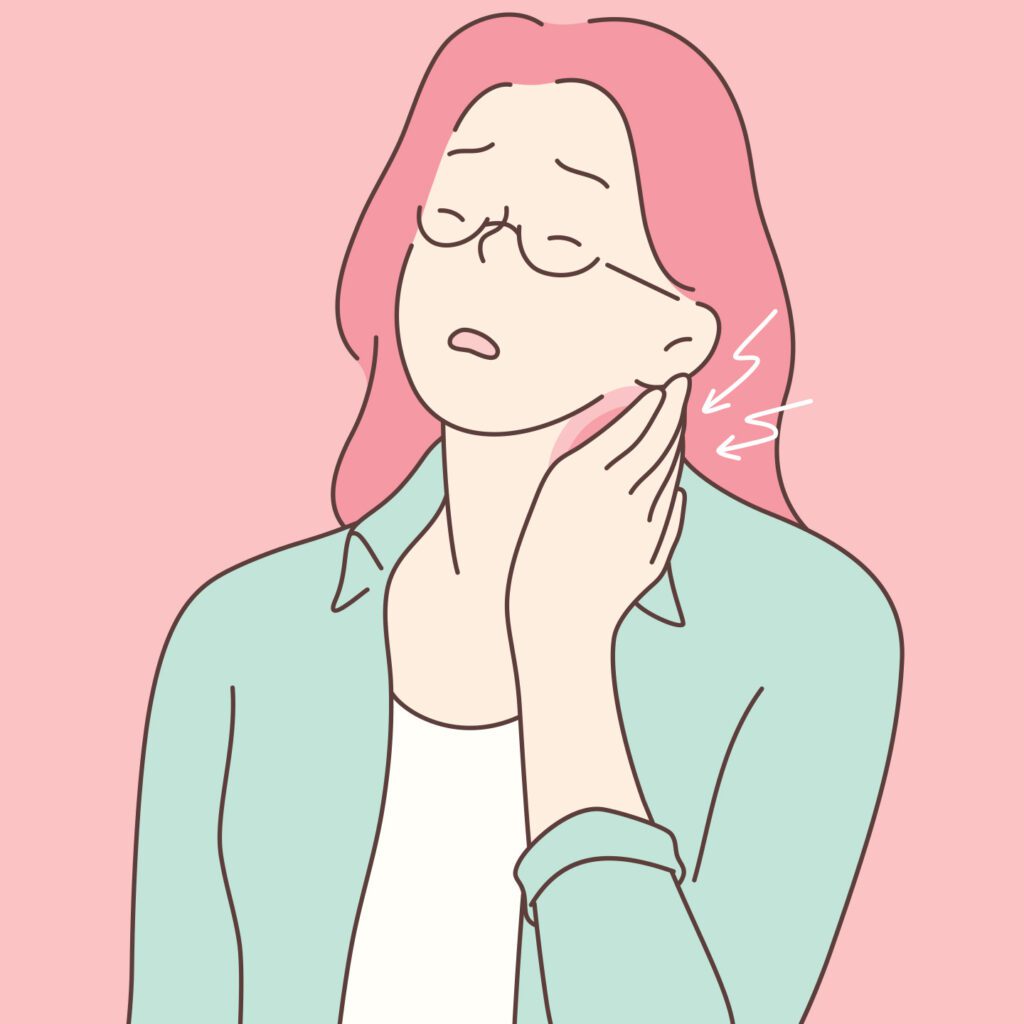Most people have heard of fibromyalgia and understand that it is associated with chronic pain, but there is a surprising amount of mystery surrounding the disorder. Here, we spoke with Dr. Matt McClanahan of the Center for Insight Medicine and Katie Sohler of BenchMark Physical Therapy to learn more about fibromyalgia – from getting a diagnosis to living with the condition.
What Is Fibromyalgia?
Fibromyalgia is a chronic condition that affects roughly 4 million adults in the United States each year, according to the CDC. The condition is best known for causing pain throughout the body, but people with fibromyalgia also experience increased sensitivity to pain, or a lower pain tolerance, along with trouble sleeping, muscle stiffness, and mental fog that can create difficulty with memory and concentration. According to Sohler, these symptoms can significantly impact a patient’s daily life. She says, “Someone with fibromyalgia may have increased exhaustion as the day goes on, affecting their ability to do their job, go to their kid’s sporting event, cook dinner, or do activities around the home or in their community.”
The symptoms of fibromyalgia are all very real, but the mystery of this condition lies in the question of what is causing them, according to Dr. McClanahan. “In fibromyalgia there is no damage occurring in the body. You’re experiencing pain – which is the brain’s signal that the body is in danger and action is required – but there is no tissue pathology,” he says.


In order to make sense of this, it is important to understand the role that pain plays in the central nervous system. “The first thing I do is assess for tissue injury and ongoing damage. But when I am confident this has been ruled out, I begin a process of ruling in fibromyalgia, looking for inconsistencies in the structural assumption. I then help patients understand how ALL pain is an output of the brain and contextualize how the sources of threat and stress in their life are sensitizing their brain,” Dr. McClanahan explains. Pain is a natural response from the brain that signals some sort of threat to the body – though that doesn’t mean it’s all in your head. Typically, we feel pain when we have an injury, but Dr. McClanahan says, “With fibromyalgia, the brain has inaccurately concluded that the body is in danger all the time. Factors like past and present stress amplify this danger alarm, so it activates pain in many different areas.”
Risk Factors
Currently, medical experts don’t know for certain what causes fibromyalgia, and this makes it a bit more difficult to pinpoint who is at increased risk of developing the disorder. Though middle-aged women account for over 75% of patients diagnosed with fibromyalgia, this disorder can happen to anyone at any time. However, there are certain risk factors that increase a person’s likelihood of developing the disorder which include mood disorders like anxiety and depression, poor sleep, lack of exercise, and stressors like traumatic life events. Furthermore, roughly 20% of patients who have chronic disorders like rheumatoid arthritis or lupus are also diagnosed with fibromyalgia.
Medical professionals largely believe that stress is big component of developing fibromyalgia.
Diagnosis



Because fibromyalgia does not cause physical damage to the body, it can be particularly difficult to diagnose. “Fibromyalgia is what’s called a ‘diagnosis of exclusion,’ which means other conditions have been excluded prior to its diagnosis,” Dr. McClanahan explains. “The first time a patient complains of widespread pain in the absence of an obvious injury, as a professional, things like cancer, autoimmunity, and/or infection must be ruled out before even considering fibromyalgia.” To do this, doctors typically do a full evaluation, including a history and physical exam, bloodwork, and possibly imaging studies to rule out these pathological conditions. When the evidence does not point to a pathological condition and the rest of the symptoms fit, fibromyalgia must be considered.
Patients with fibromyalgia often have to deal with the stress of waiting to find out what is wrong on top of the stress from being in chronic pain. “I’ll get patients that have been to Vanderbilt or even the Mayo Clinic and nobody has been able to figure out what’s wrong with them.
Many of them seek treatment from a rheumatologist, but the medications aren’t helping or the pain is getting worse despite treatment,” says Dr. McClanahan. Unfortunately, this stress can actually cause fibromyalgia to worsen in the meantime, as stress increases the danger alarm in the brain. “If deep down a patient is worried that they have an undiagnosed cancer or that they might be the one in 10 million people who have some incredibly rare disorder, that worry perpetuates the threat response from the brain and can lead to more pain.”
Though it can be a long and stressful process, getting a fibromyalgia diagnosis offers light at the end of the tunnel for many patients. According to Dr. McClanahan, “At times, when a patient is finally diagnosed with fibromyalgia, they report some symptom improvement because there is relief and validation in finally having an answer, and even a hope for treatment. This actually makes the brain feel safer, decreasing its pain output.”
Treatment
Though chronic pain is the hallmark of fibromyalgia, it cannot be treated with typical pain medications. According to Dr. McClanahan, anti-inflammatory medications don’t work, and opiates are a particularly dangerous choice. “Opiates are a reasonable choice for acute pain that is related to tissue damage, like after a surgery or a severe injury. However, when pain from acute structural damage is mistaken for and treated like the chronic pain of fibromyalgia, a process of brain sensitization and an overactive threat response due to past and present trauma and stress, this can result in opiate tolerance, dependence, and even addiction.” he says. Rather than traditional pain relievers, effective medications for fibromyalgia include anti-anxiety medications, antidepressants, and even medications that treat seizure disorders. “The only medications that are effective for fibromyalgia all target the nervous system,” Dr. McClanahan explains. “However, rather than medications alone, comprehensive treatment involves educating the patient, recognizing the sources of their stress, managing that stress through healthy lifestyle changes, and increasing emotional awareness to decrease the brain’s danger alarm. This approach has been shown to reduce the threat load on the nervous system, at times leading to full remission.”



Additionally, patients with fibromyalgia often benefit from staying active, as a sedentary lifestyle can exacerbate the pain of this condition. Chronic pain can make it difficult to get adequate exercise, but there are ways to make exercise more manageable. “My advice is to learn to pace yourself,” says Sohler. “Treat your energy like gas in your tank – don’t use it all up at one time. Learn to leave some gas in the tank so you still have energy to use by the end of the day. Over time, with exercise, you will be able to increase the size of your gas tank.” Physical therapy can be a great place to start as a patient works toward increasing their strength and mobility, and treatments can be customized to meet the patient’s individual needs.
Sohler recommends activities like aerobics, strength training, stretching, and exercises designed to help with mobility. “Aerobic activities can include a fast walk around the block, and aquatic exercise is also helpful as it takes gravity out of the equation and movement is easier in the pool,” she says. “Relaxation training is also a good way to manage pain. Some good examples include tai chi and yoga, as they both include breath work to increase relaxation.”
Fibromyalgia can cause a significant disruption in your daily life, and though getting this diagnosis can be a long and scary process, there are treatments available that can help. If you suspect that you or a loved one may be dealing with fibromyalgia, it is important to speak with your doctors.



Matt McClanahan, DO
Osteopathic Physician, Center for Insight Medicine



Katie Sohler, PT, OCS, CIMT
Physical Therapist, BenchMark Physical Therapy

